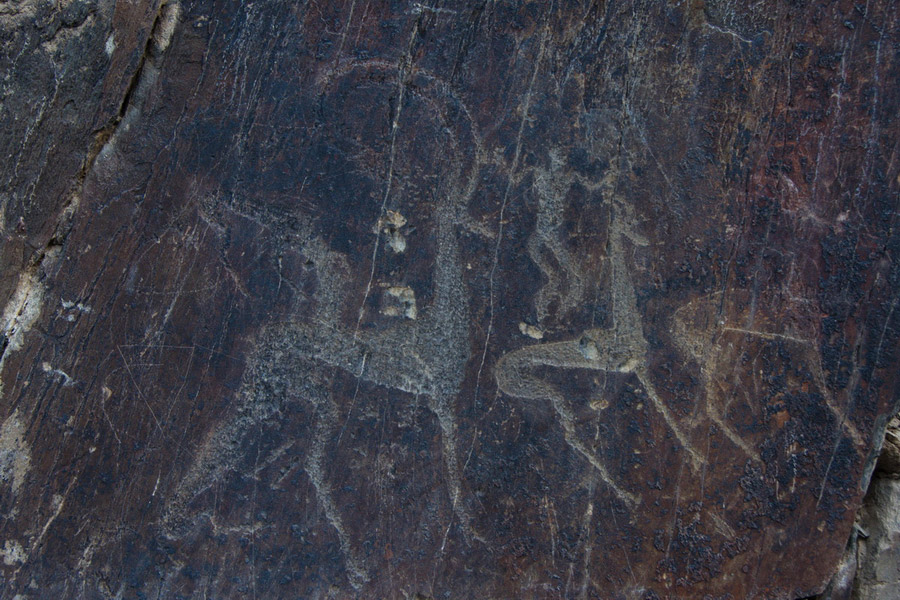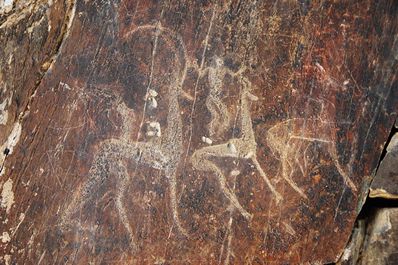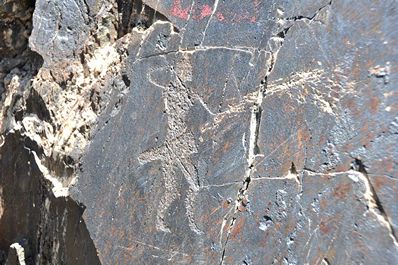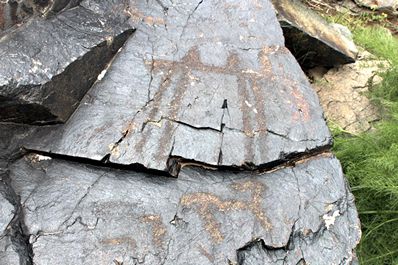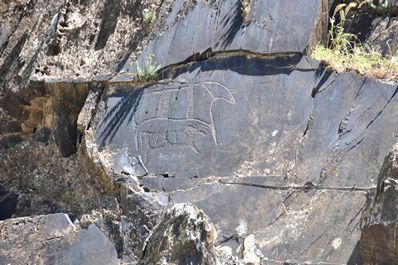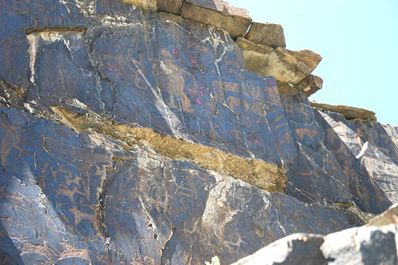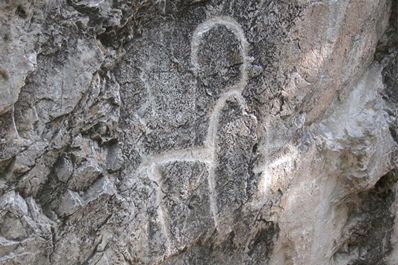Rock carvings of the Mesolithic to the late Middle Ages
Millenniums engraved on stone... this is a poetic metaphor for petroglyphs, but what they are? Are they just rock carvings of the Paleolithic era or ritual inscriptions of ancient shamans? Those questions still remain unanswered.
Petroglyphs are rock images carved in stone. They can be ritual, memorial or landmark. Traditionally, petroglyphs are all the images carved in the stone, from ancient times to the Middle Ages. The importance of the petroglyphs for the study of material and spiritual culture of ancient people is enormous. Sometimes, only petroglyphs can give an estimate for a culture of antiquity, to show the life of ancient people, their beliefs and ideas about the world.
What ancient people used to depict? In general, these are images of animals: uruses, deers, bisons, wild boars, wild horses and other animals. The fact that many petroglyphs depict extinct animals (uruses, mammoths, saber-toothed tigers, etc) is of great importance for researchers of antiquity. With the development of humanity images of life rock paintings (petroglyphs) began to appear: hunting, battles and rituals. Exploring the petroglyphs of different periods of history one can "read" the history of mankind: the domestication of animals, the first religious ideas, the emergence of weapons and much more - all this is embedded by our ancestors on the rocks.
The very process of creation of the petroglyphs are very laborious. First, the characters were carved on a rock or stone with a sharp stone or metal object, depending on the period of history, sometimes they are carefully polished, or left untreated. Some of the petroglyphs were covered with multicolored paint. The whole process required a great deal of patience and talent of the master, indicating a high degree of development of art of an ancient man.
Today, scientists discover petroglyphs all over the world. They are found in Central Asia, Russia (Karelia), Mongolia, Spain (Altamir Cave), France (the cave Font de Gom, Montespan), Italy, England and Germany. Even in the Sahara desert in the endless sands were discovered the giant multicolored murals of Tassili n’Ajjer mountain plateau.
Over 150 sites with petroglyphs of the Mesolithic to the late Middle Ages were discovered in Uzbekistan. Most of these sites are concentrated in the Tashkent oasis, the Ferghana Valley, Western Tien-Shan. A large number of petroglyphs were found in the mountainous regions of Uzbekistan. They were discovered in South Chatkal, Beldersay, as well as on the banks of Chatkal, Ugam, Pskem, in upstream Karakiyasay, in Khodjikent, in Nurata mountains. Sarmyshsay petroglyphs in the Navoi region became very popular. So far, the scientists, archaeologists have identified 15 groups of petroglyphs scattered around the sites of Sarmysh-say that belong to different periods of ancient and medieval history of the Central Asian peoples.
Study of petroglyphs in Uzbekistan began in the 19th century. There have been discovered over a hundred sites with petroglyphs, including Suratysay and Ohna, during the 20th century. Over 1,000 petroglyphs which depict the goats, horses, bears, buffaloes, oxen, etc, were found in Suratsay.
Most of the petroglyphs in Uzbekistan belong to different periods of its history, but they all are associable with a variety of story lines, as well as the art of the ancient masters, who retained the stone heritage of the ancient tribes for descendants.


